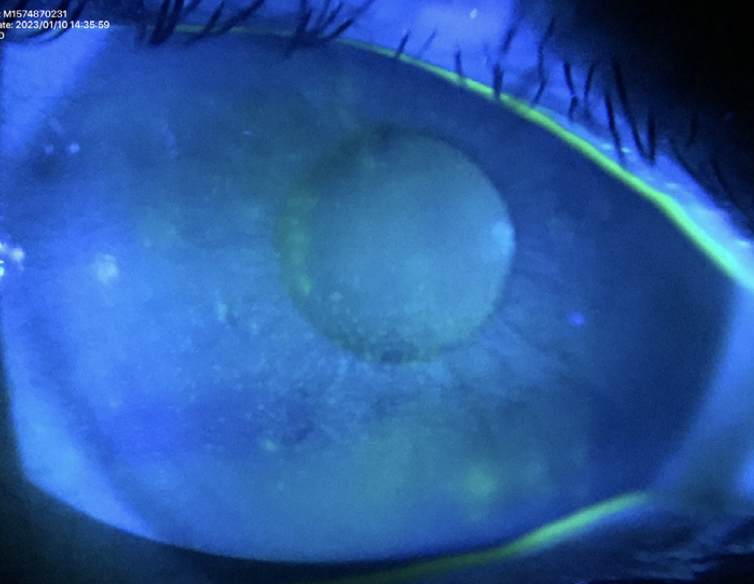Filamentary keratitis is a condition in which degenerated epithelial cells and mucous adhere to the corneal surface. It is most likely related to abnormalities of the tear film and/or corneal surface and is known to be a driver and risk factor for numerous ocular surface diseases. Treatment is generally started with topical therapy and lubricating drops. If needed, it may be escalated to include the use of a bandage contact lens and agents to decrease the viscosity of mucous in the tear film.
Presentation
This is a case of a 47-year-old female who presented with painful sandy sensation in both eyes. She had a medical history of dry eye disease and diabetes. On ocular examination, diffuse filaments were evident OU and her visual acuity was 20/50 OD and 20/40 OS. Concomitant medications included Metformin 500 mg. The patient was diagnosed with filamentary keratitis OU and keratoconjunctivitis sicca OU (Figure 1).

Figure 1. Filamentary keratitis in the right eye of a 47-year-old female.
Diagnosis and Treatment
The patient was diagnosed with filamentary keratitis and keratoconjunctivitis sicca in both eyes. She was treated with a freeze-dried amniotic membrane with an overlying bandage contact lens, compounded 10% acetylcysteine eye drops TID OD, and Refresh Celluvisc (Allergan, an AbbVie Company) QHS OU. Following initial treatment, the patient’s symptoms have subjectively improved and BCVA is 20/25 OD and 20/20 OS. Fluorescein staining showed resolution of the filaments and near resolution of the cornea (Figure 2).

Figure 2. Use of a freeze-dried amniotic membrane resulted in the resolution of the filamentary keratitis.
Discussion
A 47-year-old female with diabetes presented with severe ocular pain OU. Ocular examination revealed filamentary keratitis OU, but OD > OS. She was subsequently treated with a freeze-dried amniotic membrane, compounded acetylcysteine, and viscous tears, which resulted in subjective improvement in symptoms and objective improvement in visual acuity.

